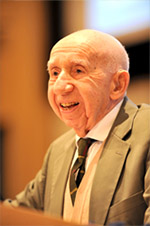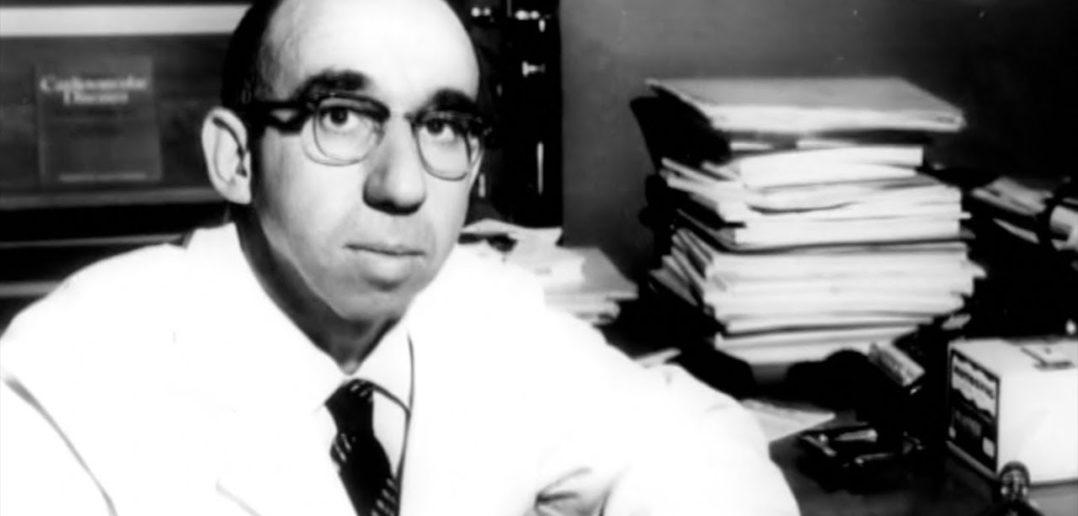AMICOR 3.068
#Dra. Valderês A. Robinson Achutti (*13/06/1931+15/06/2021)
Lisboa 1995. No elevador com espelhos do Hotel Sol.
Tenho vontade de voltar lá, para ver se não sobrou uma cópia...
Genealogia da Dra. Valderês pelo costado da avó paterna Emilha Guilhermina Lichtler Robinson. (Informações desde 1550)
#ZH Digital (31/01/2022)
Um modelo no atendimento à saúde
Quem observa a eficiência e a gentileza das equipes do Centro de Saúde Modelo, em um momento que tanto precisamos delas, em função da pandemia da covid-19, pode não saber que o padrão de excelência da unidade não é fruto do acaso. É, sim, resultado de uma longa história construída com idealismo e dedicação. Um dos serviços de saúde mais tradicionais de Porto Alegre, o Modelo (como é popularmente conhecido) completou 80 anos de atividade há pouco mais de um mês (no dia 29 de dezembro de 2021) na Avenida Jerônimo de Ornelas, 55 (na esquina com a João Pessoa), no bairro Santana.
Em 1940, Porto Alegre contava com dois centros de saúde em prédios adaptados para o funcionamento como clínicas - em uma residência no Bom Fim e em um edifício no bairro Navegantes. "O prefeito Loureiro da Silva assumiu, com o governo do Estado, a responsabilidade de projetar e construir o novo Centro de Saúde da Capital, em um acordo que permutava o terreno do HPS (propriedade do Estado) pelo terreno do Centro de Saúde (propriedade do município)", relata Taísa Festugato, em estudo para o Programa de Pesquisa e Pós-Graduação em Arquitetura da Universidade Federal do Rio Grande do Sul (UFRGS) sobre o alemão Christiano de la Paix Gelbert, arquiteto-chefe da Diretoria de Obras do município de 1932 a 1953. Construído pela prefeitura, o Modelo passou um longo período cedido ao governo estadual, tendo retornado para a administração municipal em 1996.
A autoria do projeto arquitetônico é controversa até hoje. O desenho foi registrado em 3 julho de 1939, com carimbo da Diretoria de Obras, mas sem assinatura. Alguns pesquisadores sustentam que teria sido criado pelo engenheiro Ruy Bacellar, mas Taísa acredita que, "por se tratar de projeto sob a chefia de Gelbert e não haver nenhuma assinatura nos documentos", deva ser atribuído ao arquiteto alemão. Uma curiosidade é que, à época, havia a ideia da implantação de um tridente na junção das avenidas João Pessoa e Azenha, criando uma terceira via até a Rua Santana. Por isso, o projeto do Modelo previa o recuo de 22 metros no alinhamento com a João Pessoa. Esse tridente foi apenas parcialmente construído - é a Avenida Piratini, em frente ao Colégio Júlio de Castilhos, que se estende por não mais do que um quarteirão. O recuo projetado por Gelbert se transformou no jardim defronte à fachada do edifício.
A obra começou em 13 de fevereiro de 1941 e o Modelo foi oficialmente inaugurado nos últimos dias daquele ano, com o nome em artdeco na marquise. Já na década de 1940, era considerado referência em medicina preventiva, vacinação e tratamento da tuberculose, além de se constituir em um dos maiores complexos extra hospitalares do país. Ao longo de oito décadas, foram realizados ali mais de 10 milhões de atendimentos. Hoje, os serviços ofertados vão desde nutrição, odontologia e vacinação até verificação de sinais vitais, assistência farmacêutica, atendimento especializado para gestantes e atendimento domiciliar.
Atitudes inovadoras marcaram a trajetória do Modelo. Em 1988, por exemplo, tornou-se a primeira unidade do Sistema Único de Saúde (SUS) no Estado a disponibilizar consultas de homeopatia (atualmente, também oferece acupuntura). Além disso, em 2019, foi aberto o Ambulatório Trans para atendimento de saúde integral de homens e mulheres trans e travestis no segundo andar do prédio. O espaço conta com dois médicos e um grupo de residentes multiprofissionais - enfermeiro, assistente social, biomédico, médico sanitarista e farmacêutico.
O Centro de Saúde Modelo é também a unidade que mais vacinou contra a covid-19 em Porto Alegre - até a data de aniversário, haviam sido aplicadas 220 mil doses. No momento, a equipe é formada por 130 trabalhadores, que cuidam da saúde de mais de 130 mil moradores dos bairros Azenha, Auxiliadora, Bom Fim, Bela Vista, Cidade Baixa, Farroupilha, Floresta, Independência, Jardim Botânico, Menino Deus, Moinhos de Vento, Montserrat, Petrópolis, Praia de Belas, Rio Branco, Santa Cecília e Santana. Coração e alma do SUS na Capital, faz jus ao nome como padrão a ser seguido no atendimento à saúde com atenção, cortesia e qualidade.
No Centro de Saúde Modelo, abrimos o Primeiro Ambulatório de Cardiologia Preventiva, onde inicialmente (meados da década de setenta) revisávamos alunos detectados com suspeita cardiovascular no exame anual obrigatório de preparação para a prática de Educação Física. Um dos objetivos era também detectar escolares com suscetibilidade à Febre Reumática, para mantê-los em regime profilático. Posteriormente essas práticas foram incorporadas nas atividades de rotina das Unidades Sanitárias, na medida em que se estruturaram programas de prevenção da Doença Hipertensiva e outras doenças crônicas. Jair de Oliveira Soares, Secretário da Saúde do Estado
Inauguração do Ambulatório de Cardiologia Preventiva no Centro de Saúde Modelo (1972)
Link para mais algum detalhe dessa história
#Livescience

SARS-CoV-2 seems to be constantly changing. In the span of just two years, alpha, beta, delta, lambda, mu and omicron have all made headlines. And that list doesn't include dozens of other variants that were detected but not considered high priority by the World Health Organization.
Is this coronavirus's rapid evolution unusual, or do other viruses have just as many variants? We asked the experts to find out. /.../
#Northwestern University
Remembering Jeremiah Stamler, MD, Founding Chair and Professor Emeritus of Preventive Medicine
Jeremiah Stamler, MD, founding chair and professor emeritus of Preventive Medicine, passed away on January 26. He was 102 years old.
“Jerry was a giant intellect who founded the fields of cardiovascular epidemiology and preventive cardiology and led in defining new prevention concepts right up until his last days. He was also a kind and gentle soul who believed in people. As the current chair of the department he founded 50 years ago, I can say that we are all so grateful to have known him, to have been mentored by him, and to have been inspired by his example,” said Donald Lloyd-Jones, MD, ScM, chair of Preventive Medicine and the Eileen M. Foell Professor of Heart Research.
Known as the father of preventive cardiology, Stamler’s work helped transform the understanding of diet and cardiovascular health. He is also credited with discovering novel pathways to treat hypertension and defining innovative strategies for health promotion across the life course.

Jeremiah Stamler, MD, receives the American Heart Association’s Eugene Braunwald Academic Mentorship Award in 2014.
In the 1970s, Stamler helped introduce the concept of cardiovascular “risk factors” — notably cholesterol, blood pressure, diabetes, smoking — into the field of cardiology and highlighted their connection to heart attack risk, which at the time was deemed controversial by the scientific community and general public. Stamler’s INTERSALT study, which established a connection between increased sodium intake and high blood pressure, also generated pushback when he published his findings in 1997, yet eventually informed health guidelines published by the American Heart Association and others.
“Dr. Stamler was an amazing colleague and friend to hundreds of people. He gave generously of his time to many colleagues, students, post-docs and even strangers. He was a force for truth and never backed down when confronted by others who did not share his passion for truth and the best science. He made me feel at home immediately in 1991 when I became chair of the department he had founded in 1972. I loved working with him since I always knew he would make our research better, more clear, more relevant and more impactful,” said Philip Greenland, MD, the Harry W. Dingman Professor of Cardiology and a member of the Robert H. Lurie Comprehensive Cancer Center of Northwestern University./.../
#NY Times
He was at the forefront of studies that found links between salt, diet and other risk factors and cardiovascular ailments.
Na Irlanda em 1985, durante Seminário de Dez dias sobre Epidemiologia e Prevenção das Doenças Cardiovasculares, em Black Rock.#ASRM - Olhar viajante, exposição
Texto e fotos da aberturaElizabeth Blackwell, lembrada por Dra. Janete Litwiniak e Dra. Valderês
| ||||||||||||||||||||||
| ||||||||||||||||||||||
|

























 I used to assemble
I used to assemble 